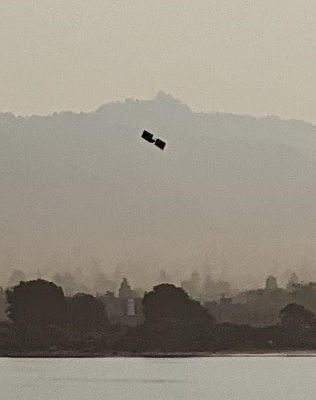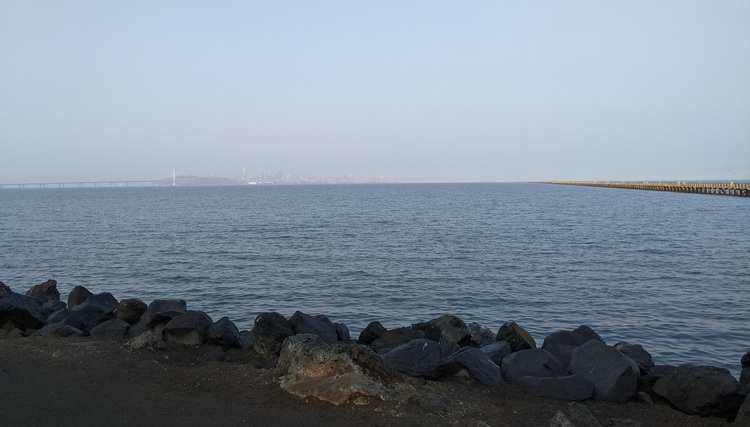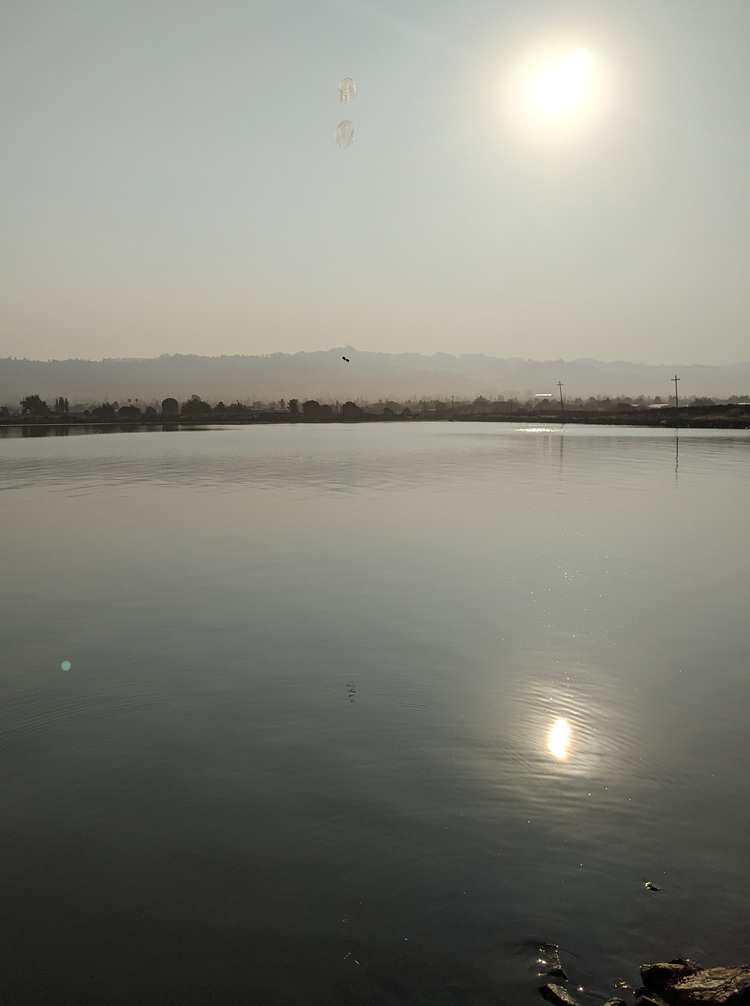With the lessons learned from the failed previous launch, we decided to launch again the next weekend, August 28th, 2021. The launch party was Martin W6MRR, Justin, Robert K6RGG, and myself KF6ZEO. We launched again from the northwest corner of the Berkeley Marina.
Our major lesson learned from the previous launch failure was there should be no fog or clouds at the launch site. Fog or clouds can condense on the balloon surface or tracker electronics, weighing down the picoballoon so it falls out of the sky. In addition, any winds or downdrafts associated with clouds can push the balloon into the ground.
This morning there was no fog or clouds, but the smoke from the Caldor and Dixie fires meant the sun was a beautiful burnt orange color as I was heading to the launch site. You could barely see San Francisco from the Berkeley Marina.
The winds felt very calm when we were ready to launch, and there was no wind ripples on the surface of the bay. But looks can be deceiving, and the very light breeze was blowing the balloon train horizontal, so that the electronics and balloons almost touched the ground. After 10 minutes of waiting, the winds calmed down a bit and we released the balloon. However, it was still just a bit too windy, and the tracker splashed into the bay just after release. There was enough lift to pull itself out of the water, but the solar panels got all twisted.
If you Zoom and Enhance on the pic above, you can see that the solar panels are twisted toward the side. Solar panels should be facing straight up, so they are in constant illumination throughout the middle of the day. Since the tracker can spin freely, if the solar panels are pointing towards the horizon they won't generate a constant source of power.

Unfortunately, we never heard from this tracker. This is our third failure in a row, which is a bit of a bummer.
The lesson learned from this launch is to not release the balloon unless the winds are absolutely calm. Hold the bottom end of the lower dipole leg, so the electronics weight is entirely supported by the balloons, and wait until the wind dies enough that the balloon train is vertical before releasing. Only this way can you ensure that the picoballoon won't get snagged on trees or take a swim in the bay.

